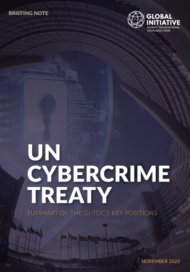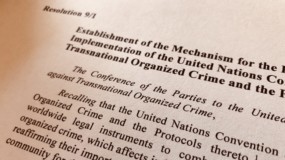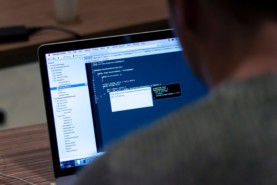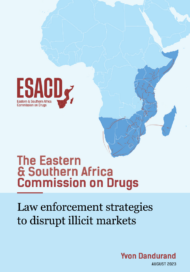Posted on 19 Aug 2019
The recent arrests of several US Marines, some in connection with facilitating the smuggling of migrants into America, raise questions as to their real motives.
On the morning of Thursday 25 July 2019, Lt. Col. Eric Olson, the commanding officer of 1st Battalion, 5th Marine Regiment, ordered his entire battalion into an unscheduled formation at Camp Pendleton, California. In the US Marine Corps, battalion formations usually start and end an average work week. Forming a battalion occupies the time and attention of nearly 1 000 people for 30 to 45 minutes, and rarely happens mid-week on short notice unless something abnormal has occurred involving the entire unit.
Soon after Lt. Col. Olson formed his battalion, Naval Criminal Investigative Service agents, in coordination with US military officials, arrested 16 Marines and one Navy corpsman on charges ranging from migrant smuggling to drug-related offences. These followed the 3 July arrest by US Border patrol of Lance Cpl. Byron Law II and Lance Cpl. David Salazar-Quintero on charges of violating immigration law. Both men were also stationed with 1st Battalion, 5th Marines.
Media reports on these incidents have focused on two issues. First, the arrests reportedly highlight the rising costs of migrant smuggling as a result of increased US immigration enforcement, which some claim has climbed from between US$1 000 and US$3 000 per migrant in the early 2000s to around $10 000 today. Secondly, and more significantly, the arrests of these 19 US military personnel expose the growth of official corruption on the US–Mexico border, a phenomenon that the Global Initiative forecasted would unfold over a year ago in a comprehensive report on global border management vulnerabilities.
These media reports, however, miss how these arrests of military personnel illuminate common aspects of migrant smuggling on the US–Mexico border, which typically has nothing to do with drug smuggling or cartels, and in the rare instances when the two are linked, has been part of a community response to border militarization. Consequently, focusing on increased smuggling costs as a causal factor for Marines to smuggle migrants is arguably irrelevant. Worldwide, some migrants purchase a high-cost ‘package’ of services from a trusted facilitator, while others buy specific services as necessary, many of which fluctuate widely in cost and often change along a migrant’s journey.
On the US–Mexico border, these ad hoc costs have varied from purchasing bus transportation from southern Mexico to the US border, to paying others to save places in the metering line to claim asylum when they need to use the restroom. Indeed, numerous forms of extortion and exploitation have arisen directly from the US policy of ‘metering’ asylum seekers. Anecdotally, these have ranged from migrants selling asylum numbers to one another; to officials charging ‘rent’ for asylum seekers at shelters; to kidnapping and other forms of violence.
In the broader context of organized crime, and what constitutes official corruption, additional aspects of the Marine arrests merit discussion. Although 1st Battalion, 5th Marines is not currently on the US–Mexico border, 2nd Battalion, 5th Marines deployed to the border in March 2019. Although official statements have emphasized that none of the Marines arrested were involved in border security, as units commonly rotate in numerical sequence, 1st Battalion was likely to have been deployed to the border from October 2018 (when initial orders were issued) until March 2019.
As reports of US Border Patrol agents issuing migrants pre-signed medical forms so they could be released from detentionalso demonstrate, the arrests of the Marines highlight a broad disgust with the abusive, violent and malevolent nature of US immigration enforcement policy among those tasked with its implementation. A Marine battalion is a highly intimate group, as personnel work and live in close proximity and are rarely alone. If 19 personnel were caught assisting migrants, it is likely that there were others who did so and were not caught. There were likely even more who knew about their colleagues’ actions and turned a blind eye.
Marines stationed on the border have probably (and rightfully) assessed the horrific conditions migrants are subjected to when detained on the US border as torture. Given the familiarity US Marines have with the Geneva Conventions, military personnel stationed on the border see, every day, that the United States is treating migrants worse than captured enemy prisoners of war. Some may have even wondered if they are violating the Uniformed Code of Military Justice – a US legal code that only military personnel are subject to – by enabling these conditions while deployed.
Although what these Marines did while deployed to the border is unclear, their duties did not involve operational border enforcement. This was not always the case. From October 1992 to May 1997, the US military conducted over 3 300 operational missions on the US–Mexico border. These ended in May 2007 after Marine Cpl. Clemente Banuelos killed an innocent civilian, 18-year-old Esequiel Hernández Jr., in Redford, Texas. Banuelos wrongly believed Hernández, who was carrying a .22-calibre rifle while herding goats, was threatening Marines who were hidden in an observation post. As a result of Hernández’s death, US military officials – particularly Marines – have firmly (and, thus far, successfully) rejected policy proposals for military personnel to police the border.
The Marines are by far the most idiosyncratic of the US military services, and it is not uncommon for units to informally sanction rebellion when they determine they have been given bad orders or believe a situation is ‘f–ked up’. Although reports say the Marines would receive $1 000 in payments for assisting as drivers, it is still uncertain how that money would have been distributed or what costs the Marines incurred. For 18 Marines and one Navy corpsman[1]to have been charged, it seems unlikely they were in it just for money (young Marines are not well known for financial ambition or discipline).
More likely, as with most migrant smuggling activity, there were a range of motivations involved. For the Marines, these may have included empathy for migrants, frustration with immigration policies, a pursuit of perceived heroism and the thrill of risk. From 1961 to 1965, when the Berlin Wall marked a different form of divide, former US Marine John P Ireland was one of several drivers in a smuggling ring. He is now celebrated at the Checkpoint Charlie Museum in Berlinas someone who ‘at great risk to their personal freedom brought refugees out of East Berlin to freedom in the West’.
Although facts are still emerging about the Marine incident, what we already know highlights the critical truth that a monolithic view of smuggling on the US–Mexico border is flawed. There is a difference between a single corrupt official who uses authority to enable an ongoing payoff scheme, and a group response by a number of personnel that occurs in reaction to perceived wrongdoing. The former typically involves individuals who seek to keep their acts private to maximize personal profit. The latter, if widely known (as the incidents involving the 19 personnel appear to have been), is a form of group protest. While the law is broken in both cases, the motives for the lawbreaking matter greatly.
For policymakers and organized-crime researchers, it is impossible to definitively judge the motives of the Marine smugglers. At the same time, it is equally irresponsible to label this activity as the work of the cartels or the conduct of a few bad apples. Like the Border Patrol agents who work to maintain decency amid inhumane policy, the actions of these Marines point more broadly to a form of dissent against the militarization of border policing. This event highlights the urgent need for US policymakers to return the focus of border management to interdicting actual criminals rather than perpetuating a system where Marines, asylum seekers and border officials alike are incentivized to break laws that should not have existed in the first place.
[1]The Navy corpsman is the ‘medic’ in a Marine battalion. Notably, the drug-related offenses are likely to involve the corpsman, as they are the only personnel in a Marine unit with legal access to prescription opioids, which they often over-prescribe and then give away or sell.



